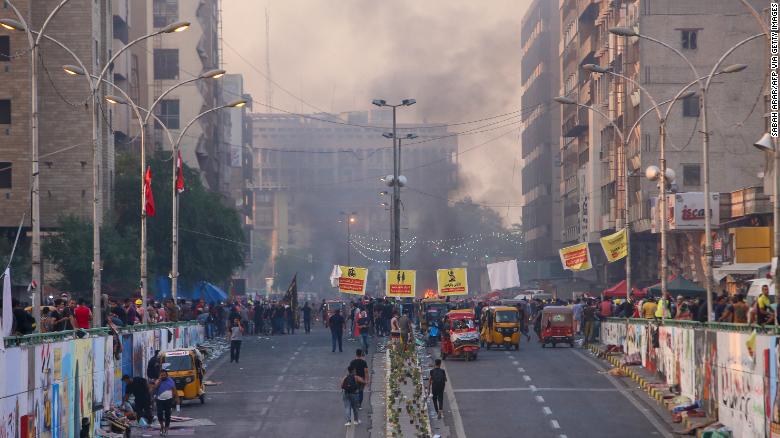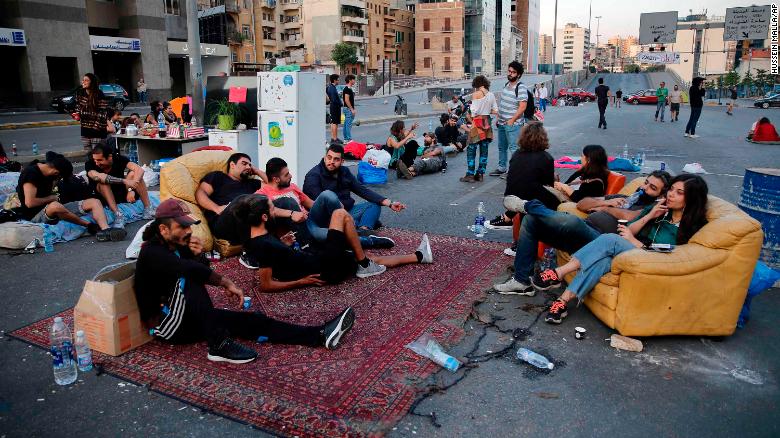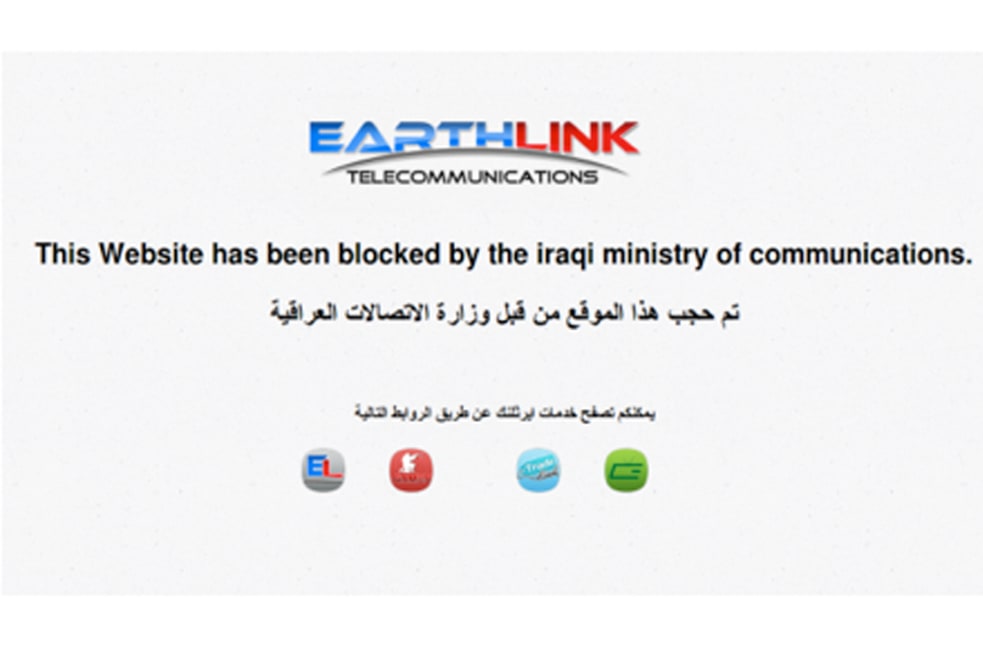The youth of a nation can be a great strength to a country, but only if the economy, educational system, and state institutions function well enough to meet their needs. The Arab Springs demonstrate the ability of youths, under the right circumstances, to translate their dissatisfaction with the established political systems into popular revolutionary movements that overlooks state borders. As demonstrated in 2005, 2011, and 2019, the Arab youths have no choice but to check their political systems. The repetitive nature of these uprisings may lead one to assume that they are failed – unable to topple the corruption and socioeconomic inequalities rampant in the political systems. However, the Arab Springs should not be examined separately, since this undermines their fundamental, driving attribute: the courage and continuance of protesters to push for representative government. In all, each spring reinforces the protester’s experience and ability to organize movements under difficult circumstances, learning from the mistakes of previous demonstrations. Nearly a week ago, more than 200,000 Iraqis marched Baghdad, demanding government reform. In the past two weeks, at least 250 Iraqi protesters have been killed. Early October, Iraqis began protesting the lack of job opportunities and high unemployment, and the government’s inability to deliver basic services, like electricity and infrastructure. This socioeconomic inequality has escalated into an anger towards Iran and the incompetence and lack of accountability of the Iraqi government. Frustrated by the inequality fostered by political elites benefiting from the system at the expense of ordinary Iraqis, young protesters demand the removal of the country’s political system, and the influence of the Iranian government. Until then, anger over the political elite continues to fuel protests in Shia majority cities like Baghdad and Nasiriyah.

Source: CNN
Today’s fight in Iraq is larger than a target of a foreign influence, despite a long history of external authorities. In the 1920 revolution, the fight was against the British. In the early 2000s, it was against the Americans that conflicted with Iraqi nationalism. Today, it is against Iran. Yet, to reduce these revolutions to the occupation of a foreign influence undermines the growing sense of patriotism at a grassroots level. “This revolution has a social dimension; patriotism is always political, and now, in Iraq, it has a social justice component,” states Saad Eskander, the former head of the Iraqi National Archives. “This revolution is not anti-American, it is anti-Iran, it is anti-religion – anti-political religion, not religion as such.” The protesters are demanding a radical change in their political system, one that has been in place since the 2003 US-led invasion of Iraq and removal of Saddam Hussein, which heavily advantaged a political elite at the expense of the ordinary citizen. In fact, Iraq has the world’s fourth-largest reserves of oil, according to the International Monetary Fund (IMF), however three-fifths of its 40 million people live on less than six dollars a day, as shown by World Bank figures. Unemployment is high among youths – roughly 60 percent of the Middle East’s population is below the age of 30 – and many lack basic needs such as healthcare, schooling, water, and electricity. Since the US led invasion and United Nation sanctions, the state’s infrastructure is in desperate need of renovation. These issues persist despite the defeat of the Islamic State of Iraq and the Levant group in 2017.
The Iraqi protests – made up predominantly of young citizens – rejects the influence of Iran’s Khomeinist ideology. In 1979, the leader of the Iranian Revolution, Grand Ayatollah Ruhollah Khomeini, replaced Iran’s millennia-old monarchy with theocracy. In consequence, Khomeinism is the founding ideology of the Islamic Republic of Iran. Since, Iran has had tight ties and considerable influence on Iraq. Geographically, Iraq shares the longest border, 1425 kilometers, among Iran’s fifteen neighbors. Iraq houses the world’s third largest Shi’a population after Iran and India. Iraqi Kurds make up 20 percent of Iraq’s population, and has always been seen by Iran – home to 5 million Kurds – as kin. Additionally, almost all Iranian-Arab tribes in southwest Iran branch onto the other side of the border with Iraq. Over two million Iraqis have been driven out by Saddam Hussein over three decades, and took refuge in Iran. This means that many of these Iraqi refugees have dual Iraninan-Iraqi citizenship and today hold top political and military positions in Baghdad. 90 percent of Iraqis live within a 100 kilometer radius of the border with Iran. Each year 12 million Iranians travel to Iraq for pilgrimage to holy cities and over 10,000 Iranian clerics preach between Najaf, Karbala, and Baghdad.
Recently, in reaction to the imposed sanctions on Iran by United States President Donald Trump – that his predecessor Barack Obama suspended – Iran has imposed themselves further onto Iraqi politics. In fact, Iraq is the main location for Iran to deliberately trade and disregard these sanctions. A lost control over Iraq, and in effect, an Iraq successful without “walayat al-faqih” – the central Khomeinist political doctrine – would threaten the Iranian ruling elite in Tehran, while proving the position of the Shi’a population and Iraqi protesters that involvement in government is not in the interest of the faith. Senior cleric, Muhammad-Jawad Alawi Borujerdi, claims that clerics should reinstate their traditional roles as “the conscience of society and not its rulers.”
Khomeinist Shiism is further challenged by a theologist movement Tehran elites dub “English Shiism.” This movement is claimed to be behind the revolts in Iraq; it calls the involvement by the clergy in politics against “true believers” and the Khomeinist regime as abusing religion for its own purposes. Iran’s leader, Ayatollah Ali Khamenei – whom many Lebanese and Iraqi Shiites also see as a spiritual leader – blamed the United States and Western intelligence agencies for the Iraqi protests, and called upon Lebanon and Iraq to “stabilize these security threats.” Whereas Iran often clashes with the United States – and with it Israel and Saudi Arabia – identifying them as threats to security and regional influence, Lebanon and Iraq represent a direct threat to the state’s authority. The proximity of the anti-government campaigns could inspire protests inside Iran itself. Additionally, if Lebanese and Iraqi protesters succeed in overthrowing their Iranian-influenced governments, Iran could lose decades worth of financial, political, and military investments – essentially what made it one of the Middle East’s strongest powers.

Source: CNN
The revolts in Iraq represent a new generation that does not identify with religious sects or linguistic ethnic divisions. The represented struggle between younger Iraqis and older generations demonstrates a more cautious generation concerning political elites and a rising group that rejects their leadership. These revolts are unlike others – both men and women are seen protesting, whereas social media has played a prominent role. Protesters are spotted self documenting events, with protester Alkasim Alabsady stating, “It’s become our responsibility to show the truth that conventional media cannot publish.” Mohammed al-Amin, a second-year medical student who was working at one of the first aid stations, treating protesters from tear gas and pepper spray exposure, “We have internet, we have traveled. We can see what the world is like and we want a different life. We want to be like the other countries, we want our rights.”
In reaction to protester’s demands, the Iraqi government has gradually restored internet service, but social media services including Facebook, Twitter, and WhatsApp have been blocked. The Iraqi government has promised to draft a new electoral law, asserting that it will allow more young people to join the political process in the country, along with the dissolving of political fractions and mostly Iranian-run militias. But this falls short of the reactions protestors demand. “They don’t realize that this time it’s a revolution,” states a protestor. “And we will stay here until we get rid of all of them – Abdul Mahdi, Salih, and the whole parliament.”
On October 2nd, Iraq sent 70 percent of the country offline and blocked social media in an attempt to silence protests in major cities – Facebook, Twitter, WhatsApp, and Instagram became inaccessible from 12:30 p.m. By 7 p.m., only 30 percent of the country had internet access. Internet blocking is done by DNS tampering – disrupting the process by which domain names are transferred into the Internet Protocol (IP). When information in the DNS records are tampered with, domain names resolve to an incorrect IP address, leading visitors to a blockpage. A page blocked by the Iraqi government results in the following webpage:

Source: The Daily Beast
Researchers at the Citizen Lab at the University of Toronto have tested 1,358 web pages and URLs to find DNS records that indicated tampering. Out of these sites, 7 of the total URLs were affiliated with Islamic State of Iraq and the Levant group – these 7 sites found no barrier or tampering to access. “The fact that Iraq is not blocking forums with explicit content from these groups (that we tested) is intriguing and is not consistent with the government’s rhetoric,” says senior researcher Helmi Noman. The Internet restrictions are labeled by the Iraqi government as a means to block internet access to Jihadist groups, limiting their ability to mobilize and communicate. “It could be because the government is more concerned about the participation of the wider society in the discourse on the current crisis, hence the focus on blocking of social media,” reflects Noman.
While politicians are hoping that the protests will blow over with time, it is difficult to see that the protesters can reconcile with the elite that has benefited from the system. Prime Minister Adel Mahdi is criticized for utilizing security forces to suppress the protests. In the first week, about 150 protesters died and 5,500 people were wounded. As of November 2019, the death toll rose to 319 with nearly 15,000 injured. Teargas and live ammunition is used by Iraqi forces to quell the protests. Following these deadly responses from the Iraqi government, protestors are demanding early elections and a new government. Iraqi Prime Minister Adil Abdul Mahdi claimed that his government would make “significant Ministerial amendments” and noted that the young generation of Iraqis were leading a movement that “shakes the entire country.” In a televised speech on Iraq’s Al-Iraqiya TV, President Barham Salih confirmed that Abdul Mahdi had agreed to step down, but only on the condition that a successor is agreed to replace him in order to “prevent a vacuum.” Yet, a successor that is appointed through the current regime, will only enforce the status quo. The only transition towards democracy can be done through a new institution, which will become clearer with time.

Source: Aljazeera
The demonstrations in Iraq are not the sole protests in the area, but rather are a part of a larger trend that many say mimics the beginnings of a second Arab Spring. In Lebanon, Egypt, and Iraq, youths are demanding the riddance of Iranian influence in the era. The protests in the south of Iraq reflect a greater trend in the majority-Shi’a cities in the Middle East: young protesters are rejecting the socioeconomic inequalities, and feel empowered in the movement the have created. It is not the end goal but the influence they have created that pressed the protesters to continue. The Arab Springs from the early 2000s reflects a development toward a new political order, while giving the protesters a background of how to succeed in an ambitious agenda. During this standoff between the government and protesters, the protesters know to follow their own agenda, not the remediations of the elite – even if that means a continuation of violence. If the protestors show stamina and remain on the streets in significant numbers, this will be a victory in itself.
Featured Image Source: Foreign Policy